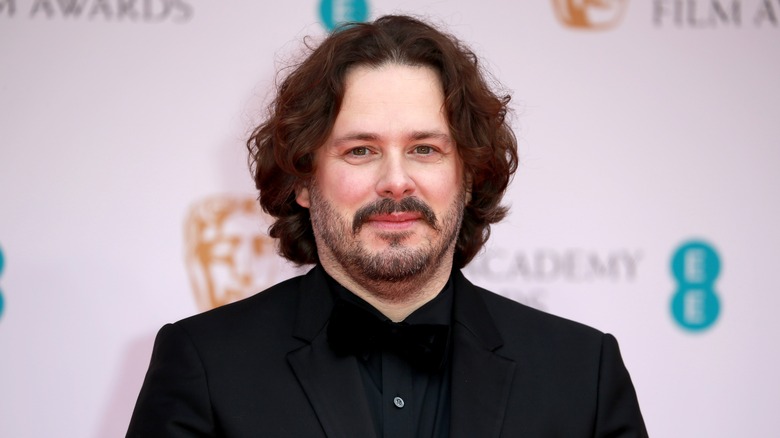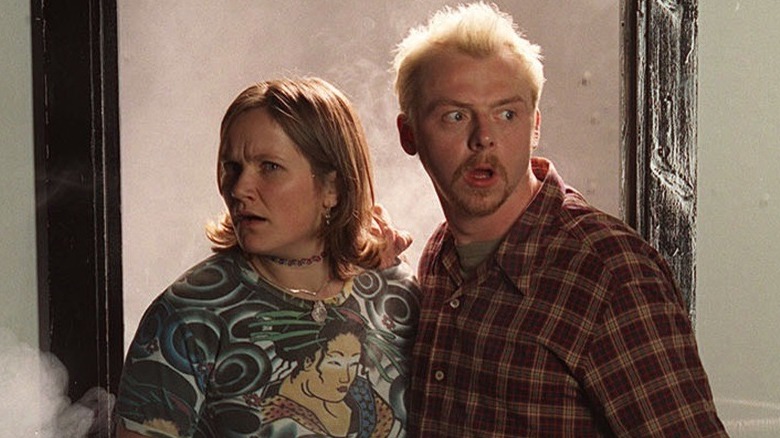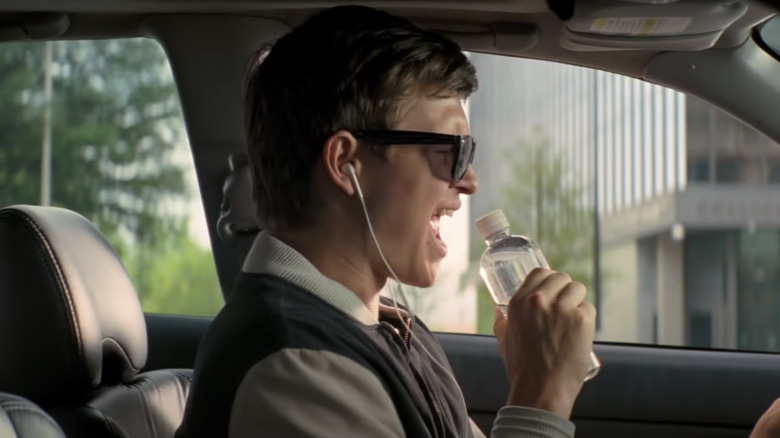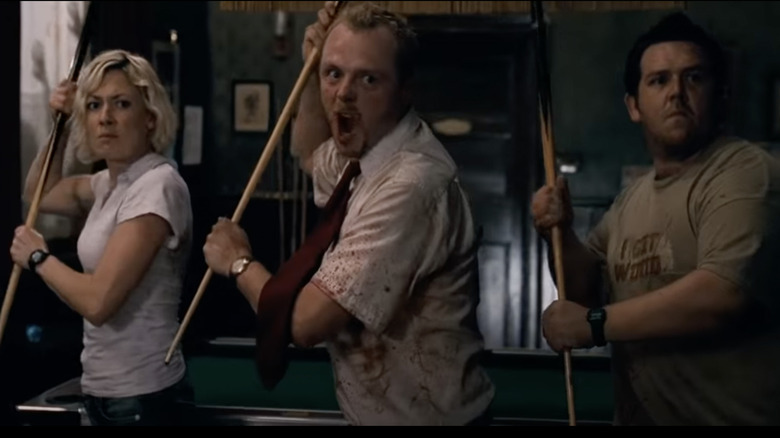Edgar Wright's Signature Soundtracks Originally Served A More Practical Purpose
As a movie-going, TV-watching society, we have become obsessed with picture quality. Deep down, we all want a 70 inch 4K screen in our living rooms that will squeeze every color and texture out of each frame of a movie. Because of our fixation on image, we can often forget the importance of sound in film. This happens a lot on movie sets, too. If the camera crew needs another take, you're doing it again, but if the sound team asks for one, it probably ain't happening.
A lot of film sets run on that old '90s Canon slogan, "image is everything," so when a filmmaker decides the way a movie sounds is as important as how it looks, I take notice. A few modern directors intertwine sound and image especially well, Scorsese and Tarantino being two of the most famous examples. They both cleverly combine scenes with just the right song to heighten tension or absurdity. But it's Edgar Wright who has truly perfected the use of sound in his films.
It shouldn't come as a surprise to you that I love movies, but I also really love sound and music, and when those all come together it's a thing of visual and auditory beauty. Nobody pulls that off quite like Wright. And in the beginning, his soundtracks were not created to explore his love for blending image and sound, but to solve a very practical problem.
The early sounds
At the start of his career, Wright directed a U.K. comedy series called "Spaced," which focused on two friends (Simon Pegg and Jessica Hynes) who have to become a fake couple to find an affordable apartment. The show lasted two seasons, both of which have a 100% critic score on Rotten Tomatoes, and launched the careers of Pegg, Hynes, Nick Frost, and Wright. The series also led the director to create his signature soundscapes.
Wright, along with his editing partner, Paul Machliss, came together to create their own sound design for the show. If you've seen a more recent Wright movie, you might think he threw his hat in the sound ring because he loves music, but the reason is much more practical. Machliss discussed this in an interview, saying:
"This goes back to when we worked on 'Spaced.' Back then, Edgar didn't want to leave anything to chance so, instead of waiting for full audio post, we decided to create the most convincing soundtrack we could before showing episodes to the execs."
So, along with our love of movies and music, Wright and I also share a nasty little habit of being impatient. Understandably, he didn't want to show executives a TV show without the proper sound design or wait until all the post-production work was finished, so he created his own. And a style was born.
Subtle hints of what would become Wright's signature sound work can be heard in the first episode of the series. Julie Andrews' "Getting to Know You" plays over the scene of the two strangers, well, getting to know each other, sounds are paired with camera movements, and video game noises even make an appearance.
We'd hear him do all of this again, but better, throughout his career.
The Wright sound
Wright isn't the only director to understand that sound can affect image, but he seems to be one of the few to take full advantage of that fact. Wright's soundscapes enhance every single element of his movies. For example, watch, and, more importantly, listen to the first two minutes of the opening scene from "Baby Driver," I'll wait.
Amazing, right?
So much is communicated in the first two minutes of that movie and no one says a word. The soft squealing of new brakes and the growling engine of a powerful car set the scene for a getaway chase that will happen later.
A repetitive beat plays as the camera cuts between the four people in the car, and turns into a full-fledged melody as three of them get out of the vehicle, grab bags from the trunk, and pull masks over their mouths as they walk towards a bank. The sounds mimic the teamwork of these unknown people, and the growing tension in the music tells us they're up to no good.
Then there's Baby.
Baby (Ansel Elgort) suffers from a never-ending ringing in his ears from a childhood accident, which he blocks out by constantly listening to his iPod. His love of music, and his place in the mysterious group, are communicated in these first two minutes through sound as well.
Baby watches as the rest of the team leaves to take care of business in the bank until the song stops and that beat hits again. Baby's head turns with the music.
Silence.
Then, the fun begins as Baby and the song sync up and he has his own personal concert in the car. He dances and sings to the music, blending the squeaking rearview mirror, slapping windshield wipers, and the clicking of the turning signal into the song. These actions and sounds combine his love of music and his ability as a getaway driver.
In two minutes, without a single word, Wright uses sound to introduce characters, build tension, and foreshadow a pretty sweet getaway chase. Now, would this scene work without all these sounds? Maybe. Would it be as fun and engaging? No way!
More of the Wright stuff
The opening scene of "Baby Driver" is one of my personal favorites, but Wright's work is full of scenes that expertly blend image and sound to draw audiences further into the film's world.
Another fun example of Wright's blending of music and image is in "Shaun of the Dead," where sounds are used for comedic effect. Video game noises are used when the loud clanking of coins draws a zombie inside the pub. Queen's "Don't Stop Me Now" begins to play because, why not, and the characters use pool sticks to hit the zombie to the beat of the music. One of the characters randomly flips switches on a fuse box, which causes the outside lights of the pub to blink on and off. The blending of Queen with the blinking of the lights over the faces of the Zombie mob makes the scene resemble some sort of undead concert. At one point in the ring-around-the-rosie fight with the zombie, Pegg calls out, "Quiet, Queen is still on!" Because the man has his priorities straight.
It is easy to get swept up by the images unfolding in front of our eyes and forget about the sounds pumping into our ears, but both are equally important. Sometimes, it seems there is an eternal "Highlander" battle going on between image and sound in movies, a long-held belief that one is more important than the other Wright's successful blending of both seems to prove this theory wrong. His sound stylings enhance the characters, images, and story in a unique and exciting way that is unmatched by other directors.
And we all have a bit of impatience, a lot of talent, and a lagging post-production process to thank for it.



